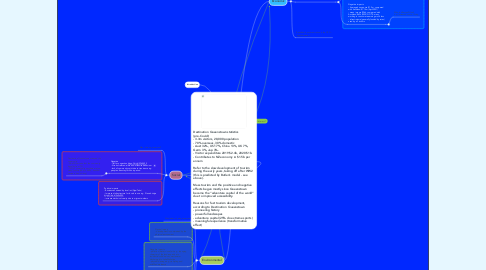
1. Destination Queenstown statistics (pre-Covid): - 3.3m visitors, 28,000 population - 70% overseas, 30% domestic - Aust 32%, US 17%, China 13%, UK 7%, Germ 3%, Jap 3%. - Visitor expenditure 2019 $2.4b, 2020 $1b. - Contributes to NZ economy ≅ $1.5b per annum Refer to the slow development of tourism during the early years, taking off after WW2 (this is predicted by Butler’s model - see above). Mass tourism and the positive and negative effects began mostly since Queenstown became the “adventure capital of the world” due to improved accessibility. Reasons for fast tourism development, according to Destination Queenstown - pioneering history - powerful landscapes - adventure capital (25% do extreme sports) - meaningful experience (transformative effect)
2. Environmental
2.1. Who/what is being impacted?
2.2. Neutral impact - development is constrained by the physical environment
2.3. Negative impacts - pollution (water, visual, air) e.g. changing character of the landscape due to residential subdivisions, wastewater discharge into Lake Wakatipu - physical damage e.g. trampling and wildlife disturbance
2.4. Positive impacts - recognised by Council, DQ, businesses that 'sustainability' can be used as a marketing tool e.g. new public transport plan, Camp Glenorchy Eco Retreat, Gibbston Valley organic certification
2.5. https://www.qldc.govt.nz/media/nazhf4fd/1803-sustaining-tourism-growth-in-queenstown-final-report.pdf
3. Social
3.1. Who is being impacted?
3.2. Negative - Traffic congestion https://bit.ly/3Fb34SS - Alcohol-related crime and offensive behaviour - lack of community spirit due to transience e.g. people often stay for short period
3.2.1. Destination Queenstown surveyed the community: - 58-62% perceive that the community benefits from TD - 75% of community say there are too many tourists.(due to traffic, freedom campers, bad driving)
3.3. Positive impacts - Businesses owned by local iwi (Ngai Tahu) - Improved infrastructure for locals to use e.g. 2-lane bridge https://bit.ly/3m7z5SX - increased ethnic diversity due to migrant workers
4. Introduction
5. Economic
5.1. Who is being impacted? Residents, business owners, employees, all of NZ.
5.1.1. Positive impacts - contribution to NZ economy ($1.5billion pa) - 90% of jobs are linked to tourism (could be negative) - 2nd highest number of accommodation facility after Auckland
5.1.1.1. Who is affected? How?
5.1.2. Negative impacts - Average house price $1.2m, compared with Auckland $1.14m (April 2021) - mean income $56k, compared with Auckland $69k (2020) NOTE: many working in tourism are earning much less - infrastructure (generally funded by rates) used by all visitors
5.1.2.1. Who is affected? How? e.g. Increased cost of living
